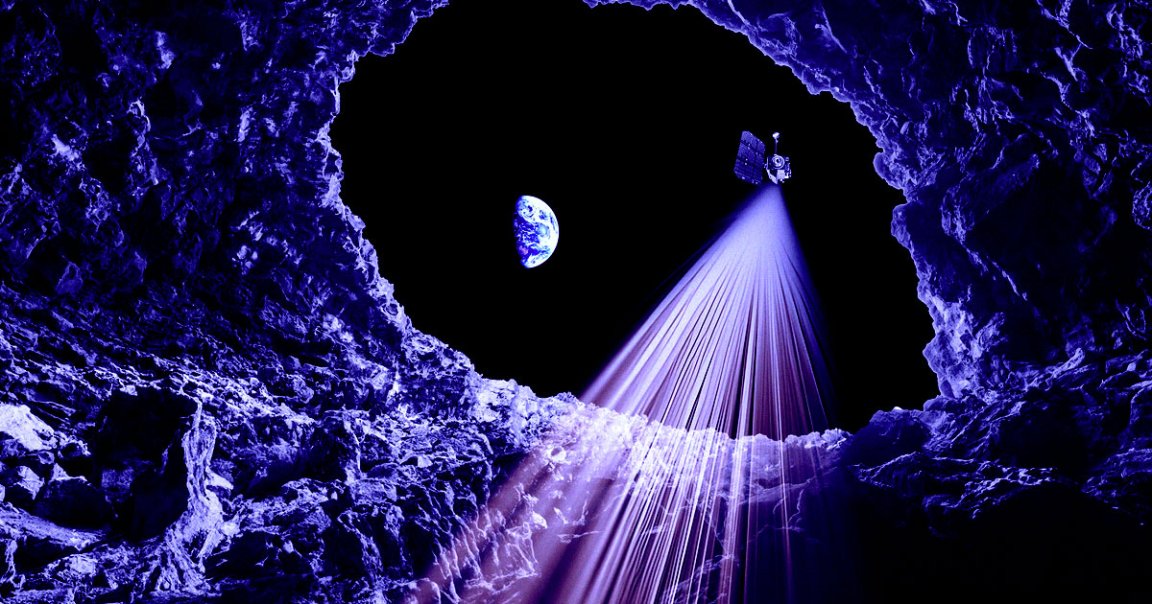
Far From Home
Since the Apollo missions over half a century ago, scientists have suspected that the lunar surface is riddled with an extensive network of tunnels.
But despite our best efforts, they’ve been unable to once and for all confirm their existence — until now.
Scientists at the University of Trento in Italy have used cutting-edge data analysis tools to examine radar reflections to provide the “first direct evidence of an accessible lava tube under the surface of the Moon,” according to University of Trento professor Lorenzo Bruzzone, coauthor of a new paper published in the journal Nature Astronomy.
“These caves have been theorized for over 50 years, but it is the first time ever that we have demonstrated their existence,” he explained in a statement.
The research highlights the potential for future humans to build permanent bases inside these tunnels.
One cave that measures at least 330 feet deep, for instance, could shelter astronauts from radiation, extreme temperature swings, and micrometeoroid showers — and establish a more permanent presence on the Moon.
Shelter Skelter
Bruzzone and his colleague Leonardo Carrer, assistant professor at the University of Trento, used radar data collected by NASA’s Lunar Reconnaissance Orbiter in 2010 to peer under the surface of Mare Tranquilitatis, a massive basin formed by lava flows that was the landing site of Apollo 11, the first crewed mission to the lunar surface 55 years ago.
“Years later, we have reanalyzed these data with complex signal processing techniques we have recently developed and have discovered radar reflections from the area of the pit that are best explained by an underground cave conduit,” Bruzzone explained in the statement.
“Thanks to the analysis of the data we were able to create a model of a portion of the conduit,” Carrer added. “The most likely explanation for our observations is an empty lava tube.”
The identified cave has a small skylight, which leads to a sloping floor below and dates back millions to billions of years ago, when flowing lava bore holes through the Moon’s surface.
The researchers are adamant that their study could aid in our efforts to establish a lunar base.
“After all, life on Earth began in caves, so it makes sense that humans could live inside them on the Moon,” Carrer told the BBC.
Scientists are still hoping to send hopping robots or drones to the Moon to explore these lava tubes, which could tell us if they’re suitable for human habitation. Other research by NASA scientists suggests that some of these tunnels sit around a balmy 63 degrees Fahrenheit, suggesting they’re a great place for humans to take shelter.
And it’s not just the US — China is also investigating the feasibility of a base inside one of these lava tubes, in another sign that the race is on.
More on weird pits: Scientists Intrigued By Almost Perfectly Circular Pit on the Surface of Mars